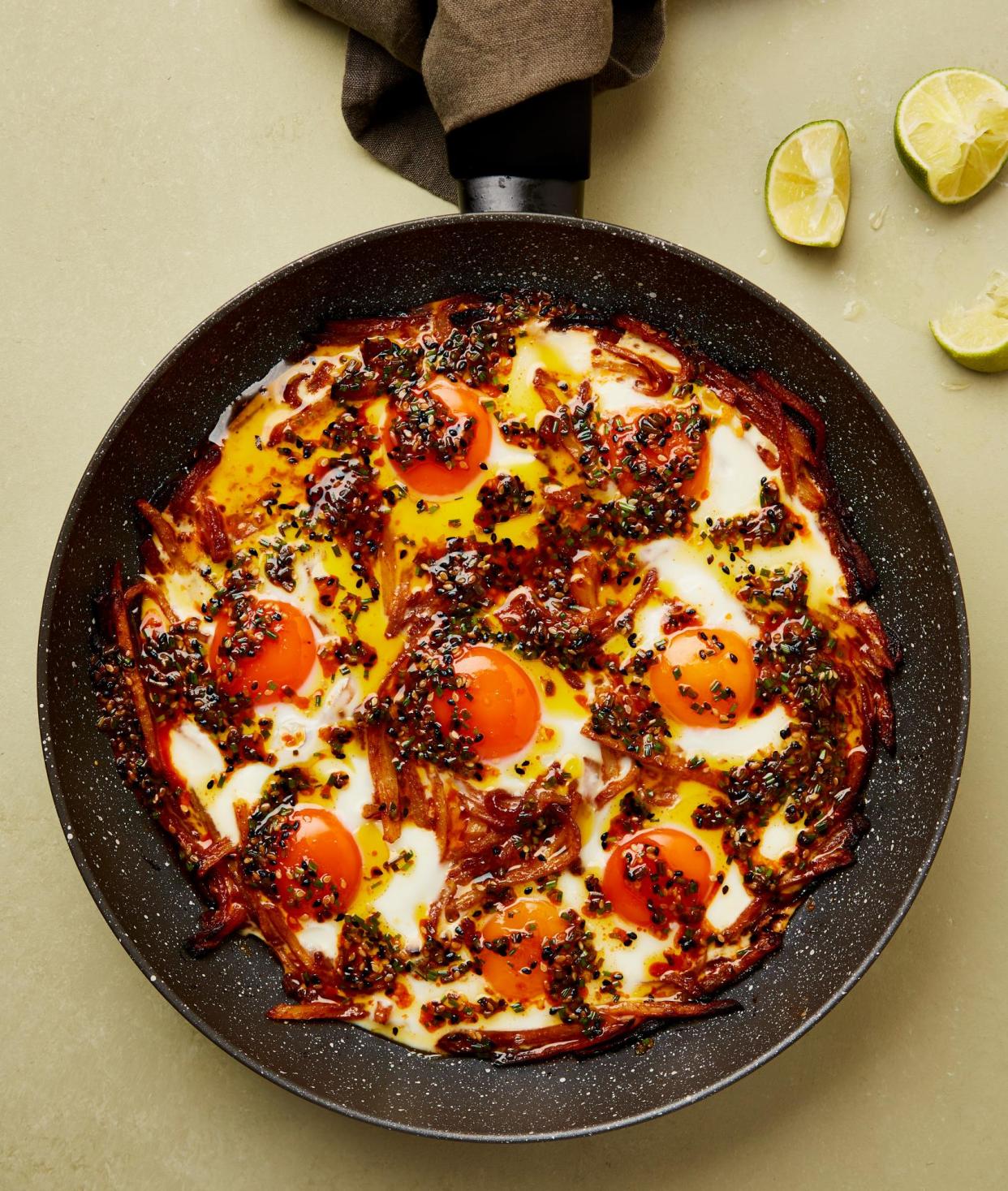What makes Korean gochujang any different from other chilli pastes?

Gochujang is a versatile Korean chilli paste that can be used in lots of different ways. Here’s how
In Korean cuisine, “the basis of seasoning is three fermented products, namely: gochujang, fermented bean paste and soy sauce,” says Su Scott, author of Pocha: Simple Korean Food from the Streets of Seoul (published in April). That’s not to say the red chilli paste should solely be used as a seasoning. “It’s much more versatile than that,” adds Judy Joo, founder of Seoul Bird in London. “You can eat gochujang straight up [with fried rice or spread on crusty bread, say], mix it into dips like hummus to jazz them up, or cook it, and dissolving it into soups and stews, for example.”
Gochujang is sweet, spicy, fruity, savoury, and unlike anything else. “It’s also quite salty, but has a lot of depth to it,” Scott adds. Also, once it’s cooked down in fat, the flavour softens. While Scott mostly reserves this cornerstone of Korean cuisine for traditional dishes (“I’m raising a dual heritage child, and my job is to introduce them to as much Korean culture as possible”), she will occasionally deviate. This might be with a dressing, thinned with water and vinegar or lemon juice, plus sugar for sweetness, to pair with broccoli or cabbage. Joo, meanwhile, would be inclined to combine gochujang and butter to dollop on her broccoli; that would work equally well on baked and mashed potatoes, or sweetcorn (when its time comes).
Perhaps unsurprisingly, gochujang and eggs is a no-brainer for Ed Smith, author of recently published Good Eggs. “Eggs are a perfect carrier for those umami, sweet flavours,” he says – his kimchi and gochujang skillet eggs come to mind. “It’s a base of lardons, spring onion, kimchi, gochujang, and a bit of water, then it’s got thinly sliced rice cakes in there, so you’ve got a chewy carb.” Make some wells in the mix, crack in eggs, cover and cook until the whites are set. Smith serves this with plain rice to “mop everything up – it’s like kimchi jiggae [stew], but not as soupy”. Next time you fancy scrambled eggs, a Spanish tortilla or shakshuka, Joo suggests adding a spoonful of gochujang to proceedings. “You could also add some to devilled eggs with mayonnaise and mustard,” she adds, or simply stir some into mayo. “It becomes something really amazing,” agrees Scott, who slathers it on sandwiches or burgers.
Gochujang’s sweet heat also makes it ideal for adding to marinades for chicken and salmon, as well as pastas, such as macaroni cheese or cooked down with passata and tomato puree in a classic vodka rigatoni. One of Scott’s go-tos, though, is yak gochujang, for which you stir-fry the chilli paste with onions, mince, soy sauce, sugar and honey. “Think of it as a Korean version of ragu, but very, very thick,” Scott says. “Like a condiment, you can keep a jar of it in the fridge for three weeks, even though it has meat in it.” And it’s a real workhorse, too: eat with rice and a fried egg, turn into a sauce for bibimbap, or add a spoonful to noodles, soups and stews. “In my kitchen, I like having one thing that works in many different dishes,” Scott sensibly adds. It’s a shortcut way to pack a punch into weeknight meals.
Got a culinary dilemma? Email feast@theguardian.com


